A US-taxpayer-funded war on drugs in Central America is expanding with “Counter Terror Squads,” targeting indigenous people, citizen activists, and even independent journalists. It must be stopped.
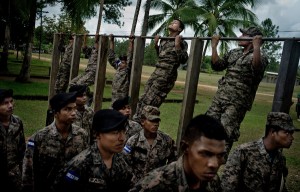

D.E.A. Action Leads to Massacre in Honduras: Indigenous Communities Again Target of “Counterinsurgency” in Central America
By Annie Bird, co-director Rights Action (annie@rightsaction.org)
The Patuca River is like a highway for over 25 Miskitu, Tawaka and Pech communities that live on its shores; there are no roads in this part of the Gracias a Dios department. But the river is much more than a road, it is their source of life. Communities farm rice, beans, yuca, and plantains on its shores, and fish the waters. They leave their towns in planting and harvest seasons to spend weeks at a time in huts along the river shore close to their fields.
Though most make their life from the river, the main source of outside employment is working on the commercial fishing boats that pick up Miskitu men at mouth of the river and take them to sea for weeks at a time. For over 20 years, Lilda Lesama has coordinated divers and fishermen for the commercial boats, transporting them by canoe from Ahuas to Barra Patuca.
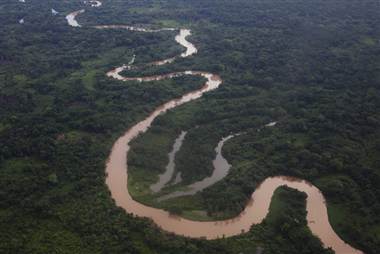

Midday in the tropical pine savannah is very hot and the villages are far apart, so it is common to travel at night. On Thursday, May 10, after leaving divers in Barra Patuca, Lilda began the ten hour trip home to Ahuas at 5pm. On route she picked up farmers returning to town from their fields.
A little before 3am on Friday, she and fifteen passengers approached the town of Paptalaya, just a few minutes from their destination, Ahuas, when four helicopters showered the boat with gunshots and grenades. Four passengers were killed, two women who were each five months pregnant, a 14 year old child, and a twenty one year old man. Four more were injured.
Later that day the story hit the national press, which described a press conference held he Director of the Honduran National Police, referred to the incident as a successful joint operation with the Honduran police and U.S. Drug Enforcement Agency, and claiming two drug traffickers were killed. A local mayor clarified that the victims were bystanders, not drug traffickers.
On Wednesday, May 16, the story hit major US news sources; U.S. officials acknowledged DEA presence in the incident but denied that U.S. forces fired. The New York Times quoted a US official explaining that drug traffickers pay local communities to transport drugs. The Washington Post quoted an official stating it was “not unusual for local authorities to work with smugglers and also said they wondered why innocent civilians would be on the water in the middle of the night,” apparently implicating the mayor who denounced the massacre.
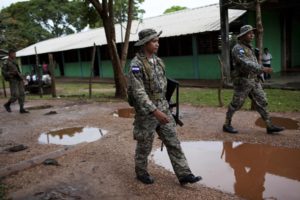

Like in the cold war counter insurgency that cost the lives of at least 350,000 Central Americans, this new war is turning the general population into military targets. Community leaders ask that the U.S. find a way to control drugs that does not involve turning their river that is both their highway and the center of their way of life, into a war zone.
The militarization is not new, drugs are not the only big money interest in the area, and there is concern that big business interests and ‘drug war’ violence may be related. Human rights defenders have denounced a steady growth of militarization of the region since the June 28, 2009 military coup, including U.S. troop movements along the Patuca River. In July, the Chinese Sinohydro Corporation began construction of the first of a series of three mega dams upriver on the Patuca River. Petroleum concessions largely held by Honduras – Tejas Oil, a Texas based junior petroleum corporation, reportedly in the same area the U.S.’s Mocoron base has been established, and The Honduras Tejas Oil website states “Separate reports… estimate between six and eight billion barrels of oil in the Moskitia region.”
U.S. TROOPS FROM IRAQ AND AFGHANISTAN FIGHT “THE GLOBAL COUNTERINSURGENCY” AGAINST INDIGENOUS PEOPLES IN HONDURAS
The massacre occurred just five days after the New York Times ran a front page article in the Sunday edition, “Lessons of Iraq Help US Fight Drug War in Honduras,” reporting on transfer of troops and military tactics from Iraq and Afghanistan to Central America, describing three “Forward Operating Bases” in Honduras. All three are in indigenous areas; El Mocoron in the Miskitu region, El Aguacate in the Tawahka and Pech area on the border with Nicaragua, and Puerto Castilla amidst Garifuna communities on Honduras’ North Coast. In addition, 600 troops assigned to Joint Task Force Bravo are based at the Soto Cano Base, neighboring Lenca communities, and 200 U.S. soldiers based in Honduras travel throughout Central America training security forces.
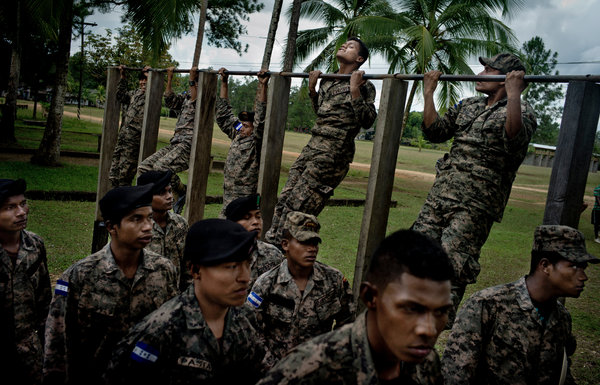

El Mocoron was an important base of U.S. support operations for attacking the Sandinista government of Nicaragua in the 1980s. The wife of the US ambassador at the time, John Negroponte, claims to have lived in El Mocoron in 1982 and 1983. El Aguacate was known as a torture center and center of operations for U.S. intelligence operations.
Col. David Kilcullen, an Australian military strategist who has been described as General Petraeus’ principal advisor, has redefined Washington’s “War Against Terrorism” as a “War Against Global Insurgency”. The key difference: insurgency draws on a broad base of support, and though terrorism is a tactic not a subject, counter terrorism focuses on dismantling isolated cells. Petraeus is currently head of the Central Intelligence Agency and is a former commander of multinational forces in Iraq and Afghanistan.
COUNTERINSURGENCY: TARGETING HUMAN RIGHTS DEFENDERS AND JOURNALISTS?
Kilcullen explains that insurgencies are fought in theatres, “regions where operatives from one country cooperate with operatives from, or conduct activities in, neighboring countries.” Kilcullen identifies methods to fight insurgencies, which include: interdicting links between theatres of operation within the global insurgency, denying the ability of regional and global actors to link local actors; and interdicting flows of information, personnel, finance and technology between and within theatres.
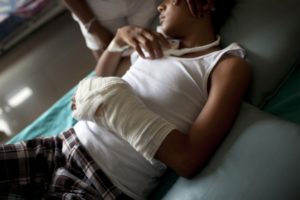

Attacks on international human rights activists in Central America and the ongoing extreme violence against journalists seem to fit with Kilcullen’s counter insurgency tactics, both are links between indigenous and campesino communities and the global community. Since the 2009 military coup, over 20 journalists have been killed. Reporters Without Borders declared Honduras to be the most dangerous place in the world for journalists.
Over recent months both in Guatemala and Honduras human rights activists have come under attack. On May 1 in Barrillas, Huehuetenango, Guatemala, Maya-Chuj townspeople took over the military base after an anti-dam activist was murdered. The government accused the upset townspeople as acting a as a front for drug traffickers and blamed ‘foreigners’ for instigating problems in what was widely believed to be references to human rights activists who support communities struggling for respect of the results of indigenous consultations rejecting mines and dams in their community.
In February a similar incident occurred in Sasiguan, Cunen, Quiche, Guatemala. When the community detained police officers they caught leaving the scene of the destruction of their crops, the latest in constant harassment related to a hydroelectric dam, national authorities claimed they identified a Spanish narco-terrorist that ‘commanded’ the community, apparently referring to a journalist who attended a trial of a community leader for charges related to tensions stemming from the dam.
Since February the staff of Honduras’ most recognized human rights organization, COFADEH, has come under intense threat by a death squad that has operated since the coup, and in early May international human rights accompaniers working with COFADEH in the Honduras Accompaniment Project received threats signed by the same death squad.
COUNTER INSURGENCY, DEATH SQUADS, AND CLOSING THE BORDERS
To combat the global insurgency Kilcullen calls for a “Global Operation Phoenix,” referring to the CIA led program in Vietnam that the Rand Corporation describes as a program of intelligence sharing with an action arm and a supporting element of border security. Its tactics included creating interagency intelligence sharing centers coordinated with village level armed groups and ‘Counter Terror Squads’ which have also been called ‘assassination squads,’ or death squads.
Death squad activity has grown in Central America in the past few years. Killings of National Front for Struggle (FNL) activists, Banana workers unionists and violence against indigenous communities resisting a cement plant in Guatemala demonstrate what appears to be collaboration between big business and organized crime, and a resurgence of death squads. In the Aguan region of Honduras, not far from the Moskitia, over 60 campesinos have been killed by what appears to be a death squad centered in palm oil security forces and a military unit trained by the U.S. Army Rangers.
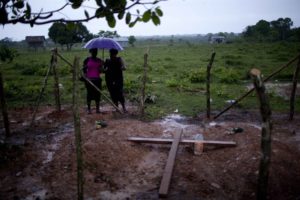

The United Nations supported Truth Commission in Guatemala found that business and crime networks collaborated in the 1970s and 1980s to form death squads that served the interests of both and received operational support from the military, specifically interagency intelligence sharing centers. In Guatemala the intelligence center was known as “El Archivo” and military intelligence officers identified with El Archivo are also widely known key actors in organized crime.
The ‘supporting element of border security’ for Operation Phoenix described by Rand was called IGLOO WHITE, a high tech border surveillance program which sought to cover the main ‘infiltration’ routes into South Vietnam with a variety of sensors. Today, the U.S. with Colombia, its strategic security partner in Central America, is launching a similar initiative.
The Florida based Joint Interagency Task Force South (JIATF-S) of the U.S. Southern Command provides logistical support to a newly reopened former U.S. Military base in Panama that houses the Command Operations Center for the Central America Regional Security Strategy. The U.S. is promoting ‘surveillance canals’ that control borders through technology and radar based systems, integrated into Mexico’s and Colombia’s border surveillances systems, and is promoting the creation of a new tri-national police force that will focus on securing borders in Honduras, El Salvador and Guatemala.
DRUG TRAFFICKING AND BIG BUSINESS: A STABLE INVESTMENT CLIMATE
While Kilcullen global insurgency refers to the ‘Jihad,’ Washington hawks argue that there is a nexus between Islamic terrorists and drug traffickers and in turn between ALBA nations’ governments and drug trafficking. The ‘Drug War’ is being turned into another front in the War Against the Global Insurgency, targeting the political forces resisting free trade initiatives and restricting international investment.
The irony is that Washington’s partners in the early 1980s have consistently been shown to be the creators and kingpins in drug trafficking in the region, and Washington is working with the exact same partners. It is common knowledge in Central America, demonstrated by case after case, that both the militaries and police forces are deeply implicated in drug trafficking, and denouncements are already emerging on the ground that U.S. trained units are protecting certain traffickers.
While this does not seem an effective strategy in fighting drug trafficking, Washington’s goals are more complex than simply stopping the flow of drugs. In the May 6 New York Times article, Col. Brown, Iraq veteran and Commander of Joint Task Force Bravo noted, “By countering transnational organized crime, we promote stability, which is necessary for external investment…”
But history has shown us that the “stability” needed for external investment is not necessarily at odds with organized crime.
Annie Bird, annie@rightsaction.org
*****************
See Also the disturbing propaganda in the NYTimes: Thom Shanker: “Lessons of Iraq Help U.S. Fight a Drug War in Honduras,” The New York Times
Initial Findings:
HUMAN RIGHTS DELEGATION FINDS DISTURBING EVIDENCE OF U.S.A. INVOLVEMENT IN KILLINGS OF MISKITU PEOPLE IN AHUAS
CONTACT: Karen Spring, spring.kj@gmail.com
A delegation of academics, human rights and labor activists, Canadian and U.S. citizens, many with extensive experience in Honduras, organized by U.S. and Canadian-based human rights groups Rights Action and Alliance for Global Justice, visited the community of Ahuas in the Department of Gracias a Dios in a region known as La Moskitia located in eastern Honduras on May 22-23, 2012.
On May 11, 2012 four helicopters conducted an apparent drug interdiction near the town of Ahuas. At least one of the helicopters opened fire on a passenger boat killing two pregnant women, a 14-year-old boy and a 21-year-old man, while seriously injuring at least four more. The purpose of the visit was to inquire into this tragedy.
According to press reports, the United States State Department acknowledges that participating helicopters were titled to the State Department but were piloted by Guatemalan military and contractors. The DEA confirms that a DEA Foreign-Deployed Advisory Support Team (FAST) participated in the operation supporting a Honduran National Police Tactical Response Team, while U.S. military’s Southern Command claims that no U.S. military personnel or contractors participated in the action.
Our delegation interviewed local community representatives, injured survivors, family members and eyewitnesses on the scene as well as a Honduran military officer.
BASED ON OUR INVESTIGATION, WE ARE ABLE TO CONFIRM THAT:
Following the massacre the helicopters landed to seize drugs from a boat near the massacre site. All those who exited the helicopter were identified as tall, light-skinned English speakers with limited Spanish proficiency wearing military uniforms, appearing to be U.S. military personnel. They carried out all actions on the ground, appearing to play much more than a support role in the operation.
These security forces identified as Americans aimed guns at, threatened to kill, and handcuffed local residents who were attempting to assist those wounded in the massacre during approximately 2 to 3 hours while military personnel retrieved the drugs by forcing at gunpoint a relative of some of the victims to ferry drugs from a boat to the helicopters. In this way security forces actively prevented emergency medical attention to the victims who lay on the banks of the river and in the water until after helicopters departed. One injured and bleeding victim clung to weeds in the river for as long as three hours before being assisted.
All witnesses stated independently that all shots fired came from overhead from a helicopter.
Neither the U.S. nor the Honduran government has interviewed the eye witnesses or secured evidence at the crime scene which indicates that no serious investigation has been conducted into the massacre that was carried out from one of the U.S.’s own helicopters with participation of U.S. Security Forces.
Since the massacre Ahuas has been occupied by several dozen Honduran troops who patrol the unpaved streets and state they will stay as long as necessary. We received reports that the U.S. military presence in the vicinity of Ahuas is increasing, a center of U.S. military operations has been established in nearby Brus Laguna and a permanent U.S. military base in Caratasca, roughly an hour boat ride from Ahuas.
OUR VISIT TO THE MOSKITIA REGION IN GRACIAS A DIOS HAS RAISED A NUMBER OF CONCERNS.
We are extremely concerned by the lack of credible investigation. The U.S. government categorically denies the possibility that its security forces were involved in the killings, or that the United States shares responsibility. Rather, the State Department claims it is ‘cooperating’ with Honduran investigations and is referring all inquiries to the Honduran government officials; this despite the fact that the Honduran public prosecutor’s office, National Police and military are widely reputed to be corrupt.
We are alarmed by the distorted response to the massacre by the Honduran and U.S. governments’ and much of the media coverage. US and Honduran officials have blamed and criminalized the victims, the population in general and local authorities.
We are deeply concerned by the militarization that we observed. U.S. military and civilian security forces in Honduras are applying counterinsurgency tactics to combat drug trafficking and militarizing regions where there are significant natural resources. Thus, today we are witnessing a resurgence of death squads and the remilitarization of Central America such as occurred in the 1980s. We are alarmed by press reports of the recent transfer of counterinsurgency tactics and personnel from Iraq and Afghanistan to Central America. By characterizing the general population and local authorities as drug traffickers, indigenous communities have become the focus of counterinsurgency actions.
Many people we spoke with, including representatives of indigenous organizations, are deeply concerned that militarization and violence generated by the ‘drug war’ is negatively impacting their communities and is focused where there are significant natural resources, rivers with hydroelectric potential, petroleum, gold, and forests. Texas-based Honduras Tejas Oil and Gas Company, a joint venture with concessions in the Moskitia, estimates there are six to eight billion barrels of oil reserves in the Moskitia.
Our group was outraged that this is the role our government is playing and at how our tax dollars are used. We wonder what our country is doing bringing a counterinsurgency model to a country where U.S. backed covert counterinsurgency has caused so much suffering in the past.
What we saw in the Moskitia was dire poverty and an atmosphere of terror being generated in an area where the indigenous people are now losing control of their resources, which are key to the development of their economy.
IN LIGHT OF WHAT WE OBSERVED ON OUR VISIT AND THE CONCERNS RAISED, WE DEMAND:
That the U.S Congress investigate and hold hearings about the U.S. role in the events of May 11, 2012 in La Moskitia.
That serious and independent investigations take place exploring the role and responsibility of agents of the U.S. government in the May 11 massacre in Ahuas, be they DEA agents, private security contractors under the direction or contracted by agencies of the U.S. government or other security forces. This investigation should include identifying criminal responsibility of specific individuals.
That the rights and decisions of indigenous communities and popular movements be respected rather than treated as drug traffickers and insurgents with complete disregard to fundamental human rights.
That the U.S. government speak out publicly against the presence of individuals widely known to have involvement in drug trafficking and death squads within the Honduran justice system today.
That in light of the abuses we documented, the U.S. government must withdraw all U.S. security forces including DEA and private contractors from Honduras, cease military assistance and training, and stop promoting remilitarization in Central America.
Tegucigalpa, Honduras
May 27, 2012
Irene Rodriguez, Boulder, CO
John Walkey, Boston, MA
Maria Robinson, California, CA
Judith Ancel, Kansas City, KS
Greg McCain, Chicago, IL
Mary Dean, Chicago, IL
Karen Spring, Toronto, ON
Alice Kitchen, Kansas City, MO
Melissa Stiehler, Kansas City, MO
Jean Grahame, Farmington, IL
Susan Cole, Lafayette, LA
*********************
WHAT TO DO
NO MORE POLITICS AND BUSINESS AS USUAL
Rights Action asks North Americans to donate funds to the courageous grassroots organizations in Honduras (see RA website), … and to keep on, keep on, keep on sending copies of this information, and your own letters, to your own elected politicians (congress members, senators, members of parliament) and to other government officials and your local media.
Since the June 2009 military coup, that ousted the democratically elected government of President Zelaya in Honduras, the governments of the USA and Canada are the governments that have most supported and legitimized the post-coup, military-backed regime of Honduras. North American companies and investors have increased their business activities in Honduras since the coup. In no small part, this illegitimate, repressive regime remains in power due to its political, economic and military relations with the USA and Canada.
USA
WHITE HOUSE: http://www.whitehouse.gov/CONTACT/, 202-456-1111, Comment Line: 202-456-1414
CONGRESS: Go to http://www.house.gov/ to get info for your member of Congress, and call: 202-224-3121
SENATE: Go to http://www.senate.gov/ to get contact for your Senator, and call: 202-224-3121
STATE DEPARTMENT – Office of Western Hemisphere Affairs: 202 647-0834, WHAAsstSecty@State.Gov
MARIA OTERO, Under Secretary for Democracy and Global Affairs; c/o Laura Pena, Assistant: PenaL@state.gov
BENJAMIN GEDAN, Honduras Desk Officer, (202) 647-3482, GedanBN@state.gov
NATHAN ANDERSON, andersontn2@state.gov
U.S. EMBASSY IN HONDURAS
Silvia Eiriz, Political Counselor, eirizs@state.gov
Simon Henshaw, HenshawS@state.gov
CANADA
Minister of Foreign Affairs – John Baird, john.baird@parl.gc.ca
Minister of State of Foreign Affairs (Americas) – Peter Kent, kent.p@parl.gc.ca
NDP Foreign Affairs Critic – Paul Dewar, Dewar.P@parl.gc.ca
NDP International Trade Critic – Peter Julian, Julian.P@parl.gc.ca
Liberal, John McKay, MckayJ@parl.gc.ca, McKayJ8@parl.gc.ca
Standing Committee on Foreign Affairs and International Development – Kevin Sorenson, SorenK@parl.gc.ca
Foreign Affairs Committee Chairperson – Dean Allison, allison.d@parl.gc.ca
CANADIAN Embassy in Costa Rica (responsible for Honduras)
Ambassador Cameron MacKay, Cameron.MacKay@international.gc.caPolitical Officer Léonard Beaulne: Leonard.Beaulne@international.gc.casjcra@international.gc.ca, tglpa@international.gc.ca



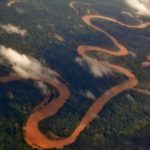
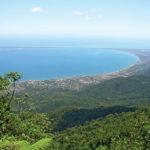
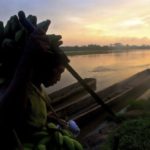
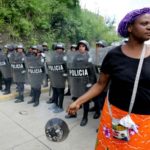
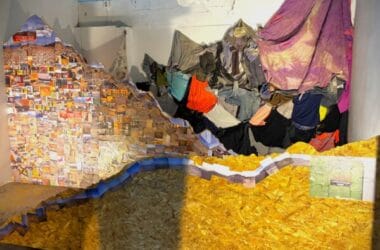
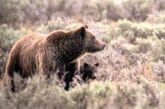




Pingback: Honduras: Coastal Miskitu People Granted Land Rights | WilderUtopia.com
Pingback: Blessing for La Moskitia, A Culture and Land in Transition | WilderUtopia.com
Pingback: Kill the Messenger: Gary Webb and the Contra-Cocaine Connection